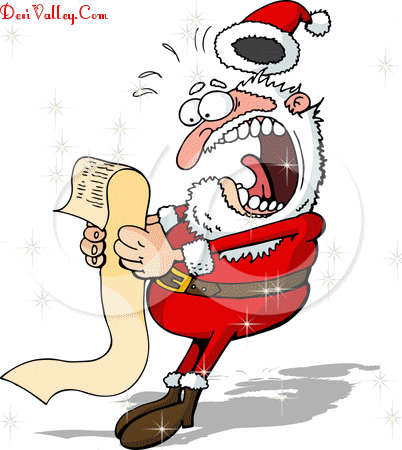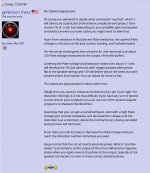Lacking and Audio Precision as well.....
i use a UCA202 DAC (20$) with my old laptop to do the measurements
Softwares are: Audio Tester, REW and Arta
After having destroyed two DAC i built an attenuator following a schematic by DM JOFFE (?) i found somewhere here around. Helps a lot
I really would want some means to see the distortion when setting the bias for the Korg triode. The changes in distortion pattern are a lot! In my case i use a setting of well out of half supply voltage.
I, too, have been amazed at how much the sound changes and how the bias setting is critical. Transient character, imaging, tonal balance and detail are all affected.
Thank you for the tip on using a DAC and attenuator. I had been wondering if I could somehow use the FFT built into REW for circuit testing. I also have an old laptop in the shop. I found that a $20 SSD upgrade to replace the original HDD was miraculous. Also found out you can run Windows 10 for free indefinitely if you don't mind the "Activate" message in lower right corner of the screen.
As Papa said, DIY gives access to things that manufacturers can not afford like exotic components, precision matched components, giant oversize heat sink or topology requiring crucial fine tuning that takes many hours. 🙂... I think the true value in DIY HiFi is to create high end audio ...
Re: Optimal adjustment
Of course you will want to decide what constitutes "optimal", which I
will take to be a particular 2nd harmonic amplitude and phase. I have
chosen 1% at 1 volt, but depending on your amplifier gain and speaker
sensitivity (or even your own taste) you might want to alter that.
Apart from variations in Nutube and Plate resistance, the optimal Plate
voltage is a function of the bias current, loading, and Cathode heater.
For the circuit as designed, the null point for 2nd harmonic is at about
12V Plate voltage (measured at the output of the Jfet buffer).
Lowering the Plate voltage (clockwise pot rotation) to about 11 volts
will develop the 1% 2nd harmonic with negative phase (after phase
flip at the speaker wiring) and 13V will deliver about the same, but with
positive phase 2nd instead. You can adjust for more or less.
The values are approximate to about half a Volt.
Ideally then you want to measure the distortion to get it just right. For
distortion this high, it is not that difficult. If you have any sort of decent
sound card on your computer you can use one of the several analyzer
programs to measure the distortion.
Assuming that you can get a numerical figure, start with a high Plate
voltage (pot counter-clockwise), and decrease the voltage until the
distortion is at a minimum, where the 2nd harmonic is being cancelled
and you have 3rd harmonic.
From there you can increase or decrease the Plate voltage until you
reach the distortion number and phase you want.
Keep in mind that the circuit inverts absolute phase. What is "positive
phase" 2nd harmonic at the output of the circuit will become negative
phase when you again reverse the phase at the output, typically at the
speaker connection, in order to have correct absolute phase.

Of course you will want to decide what constitutes "optimal", which I
will take to be a particular 2nd harmonic amplitude and phase. I have
chosen 1% at 1 volt, but depending on your amplifier gain and speaker
sensitivity (or even your own taste) you might want to alter that.
Apart from variations in Nutube and Plate resistance, the optimal Plate
voltage is a function of the bias current, loading, and Cathode heater.
For the circuit as designed, the null point for 2nd harmonic is at about
12V Plate voltage (measured at the output of the Jfet buffer).
Lowering the Plate voltage (clockwise pot rotation) to about 11 volts
will develop the 1% 2nd harmonic with negative phase (after phase
flip at the speaker wiring) and 13V will deliver about the same, but with
positive phase 2nd instead. You can adjust for more or less.
The values are approximate to about half a Volt.
Ideally then you want to measure the distortion to get it just right. For
distortion this high, it is not that difficult. If you have any sort of decent
sound card on your computer you can use one of the several analyzer
programs to measure the distortion.
Assuming that you can get a numerical figure, start with a high Plate
voltage (pot counter-clockwise), and decrease the voltage until the
distortion is at a minimum, where the 2nd harmonic is being cancelled
and you have 3rd harmonic.
From there you can increase or decrease the Plate voltage until you
reach the distortion number and phase you want.
Keep in mind that the circuit inverts absolute phase. What is "positive
phase" 2nd harmonic at the output of the circuit will become negative
phase when you again reverse the phase at the output, typically at the
speaker connection, in order to have correct absolute phase.

Why stop at just the preamp, the next burning amp should feature a tube input stage with fet output stage, it may turn out interesting😉
Last edited:
Pass DIY Addict
Joined 2000
Paid Member
I noticed that my B1 Korg preamp generates quite a lof of 3rd and higher harmonics - minimum distortion I can get (2nd harmonic cancelled) is about 0.4% at 1V output at 1kHz. Is that normal?
Also, triode sections are not well balanced - they have slightly different gain. Could this be adjusted by changing the plate resistor value?
Also, triode sections are not well balanced - they have slightly different gain. Could this be adjusted by changing the plate resistor value?
I get about .3% as a minimum, so your result is in the ballpark.
Level matching is about .5 dB. You should be able to trim this with the
Plate loading, although I haven't tried it.
Level matching is about .5 dB. You should be able to trim this with the
Plate loading, although I haven't tried it.
I get about .3% as a minimum, so your result is in the ballpark.
Level matching is about .5 dB. You should be able to trim this with the
Plate loading, although I haven't tried it.
Great, thanks. My results are very similar, level matching about 0.4dB.
The Grid requires a fairly low source impedance. At the same time, the
circuit has about 16 dB of gain, and so will want input attenuation,
whose impedance might be too high for best performance.
Not to say that that you couldn't do it....
circuit has about 16 dB of gain, and so will want input attenuation,
whose impedance might be too high for best performance.
Not to say that that you couldn't do it....
what is the max output Vpp still keeping the right harmonic profile?
maybe 13 dB if gain isn't too much if I use a passive I/V TDA1541 nos DAC?
maybe 13 dB if gain isn't too much if I use a passive I/V TDA1541 nos DAC?
It is with interest that I am the conversations and projects in this community.
I just received the korg Nutube and Toshiba Jfet 2SK170 parts.
I look forward to having fun with the B1 triode printed circuit board that you offer us.
I thank you for your generosity in passing on your knowledge and intuition you have acquired over the years.
NAMASTE

I just received the korg Nutube and Toshiba Jfet 2SK170 parts.
I look forward to having fun with the B1 triode printed circuit board that you offer us.
I thank you for your generosity in passing on your knowledge and intuition you have acquired over the years.
NAMASTE

what is the max output Vpp still keeping the right harmonic profile?
That's up to you. The 1% figure is a 1V rms which is 2.8V p-p.
For me, that works out fine. The point is that the harmonic signature is
a function of the output voltage of the tube. You might have to think
about adjusting the gain/sensitivity of what follows it.
It took only a couple of days to get a couple of Korg Nutubes from RS Components...…….
When PCBs shows up in DIY store I will get a couple of those also!
Me write today to RSanta Components




Yes.....still there:
Nutube 6P1 | Korg Nutube Nutube 6P1 Dobbelt triode-radioror, 17 ben, Parallel sokkel, 45 x 16 x 5.6mm | RS Components
You can also buy 60 of them and get them a bit cheaper…….group buy?
Are the PCBs ready in DIYSTORE? ….just before Christmas? I will have a look!
Nutube 6P1 | Korg Nutube Nutube 6P1 Dobbelt triode-radioror, 17 ben, Parallel sokkel, 45 x 16 x 5.6mm | RS Components
You can also buy 60 of them and get them a bit cheaper…….group buy?
Are the PCBs ready in DIYSTORE? ….just before Christmas? I will have a look!
Some boards modified to take the various Jfets arrived this week. I haven't
had the chance to test one yet.
I also have 20 or so of the boards for 2SK170 / 2SK370 / LSK170. Maybe
they will make nice Xmas presents.

had the chance to test one yet.
I also have 20 or so of the boards for 2SK170 / 2SK370 / LSK170. Maybe
they will make nice Xmas presents.

- Home
- Amplifiers
- Pass Labs
- B1 with Korg Triode
